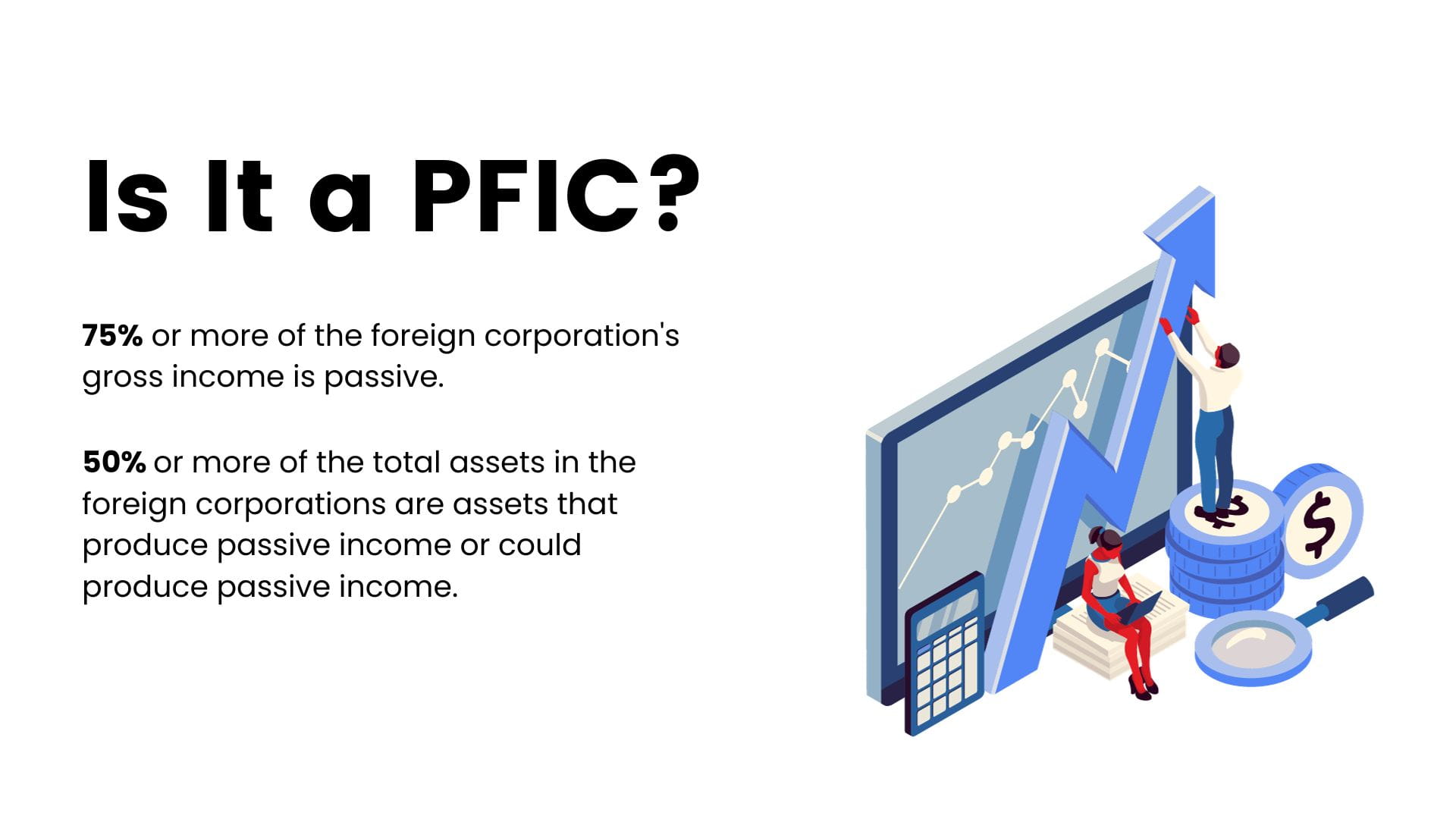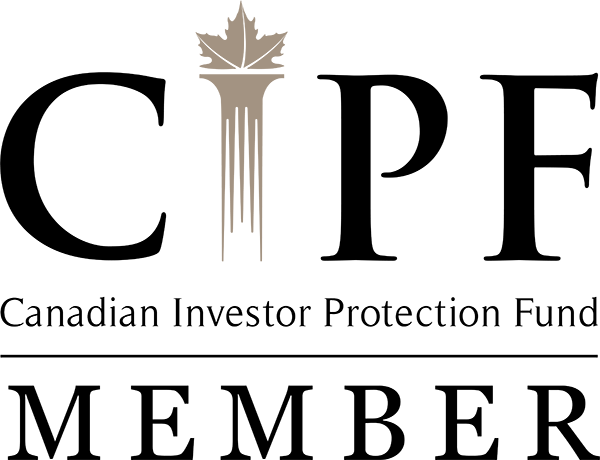Basic PFIC Reporting Rules
Written by Tiffany Woodfield, CRPC®, CIM®, Dual-Licensed Financial Advisor
Reviewed by Mia Bent, CPA, CA, U.S. Tax Advisor mia@miabentcpa.com
Reading Time: 4 minutes 40 seconds
Nobody wants a surprise tax hit.
Particularly not after you've moved to another country and are settling into a new life. Imagine if you could cross the border and immediately set up your finances in perfect order. No expensive blunders or unwanted surprises from the IRS.
Everything would run smoothly–no unwanted surprises or letters from the IRS.
That's entirely possible. You just need to know the basic PFIC rules and reporting requirements of a dual Canadian-US citizen or green card holder living in Canada.
But first, let’s go over why the rules came into effect. The PFIC rules were originally designed to prevent US persons from deferring tax on passive income earned through non-US companies. The IRS didn't want people to convert this income into capital gains taxed at better rates.
The Foreign Account Tax Compliance Act (FATCA) came into effect in 2010. This act required any non-US financial institutions to report information on US persons. The result? An increased ability of the IRS to monitor US persons and the accounts they hold.
Due to this act, the likelihood of getting found out for holding PFICs has increased. Canadian banks and brokerage firms must report non-US financial assets to the IRS annually. Thus, the IRS is more likely to know if you own any PFICs.
Before we continue, please note that this article is not designed as tax advice. PFICs are complex, and you should speak to a qualified cross-border accountant to understand your particular situation.
What Is a PFIC or Passive Foreign Investment Company?
A PFIC is a passive foreign investment company. If a non-US company satisfies either of the tests below, it is considered a PFIC.
- Income Test: 75% or more of the foreign corporation's gross income is passive. (Ex: interests, dividends or rents.)
- Asset Test: 50% or more of the total assets in the foreign corporations are assets that produce passive income or could produce passive income. (Ex: stocks, bonds, cash or even bare land.)

Which Common Investments Are Considered PFICs?
When living in Canada, most Americans assume they don't own any PFICs. It sounds like some specialized investment. But if you have been living and investing in Canada for years, you very likely have purchased a PFIC. If you've been working with a dual-licensed advisor, this won't be the case. However, if you've been working with a regular advisor who doesn't understand the PFIC implications for a US person, you likely own PFICs.
In Canada, pooled investments registered outside of the United States are PFICs.
These are some examples of PFICs:
- Canadian exchange traded funds (ETFs)
- Canadian mutual funds
- Canadian Income trusts (unless engaged in an active business)
- Real estate investment trusts (REITs) (unless engaged in an active business)
- Canadian holding companies that don't carry on an active business but rather hold passive investments.
- Potentially, it could include segregated funds—but this is not clear with the IRS.
Any income from a PFIC is traditionally treated as ordinary income for US tax purposes. It isn't treated as capital gains or eligible dividends, which may have a lower tax rate in the US.
What Is PFIC Reporting?
PFIC reporting is the requirement that US citizens or green card holders, who indirectly or directly own shares in a PFIC at any time during the year, must file Form 8621 with the IRS. As this is an additional and often complex form, you will need to pay your tax advisor additional fees to prepare these.
How to Know If You Need to File a Form 8621
Generally, you will need to do an annual PFIC report to the IRS if you hold any PFICs for each tax year and received a distribution or realized a gain on a disposition of a PFIC or reporting information for QEF (qualified electing fund).
Because of the Canada-US Income Tax Treaty, PFICs held within an RRSP or RRIF are often exempted from this requirement. However, it is very important to speak to a qualified professional about your particular situation.
For example, let’s assume you are a US person and you realize a gain from the sale of a Canadian mutual fund that you have held for several years. You did not make a QEF election in the first year of owning the mutual fund because you didn’t even know it was a PFIC back then. You will be taxed at the highest US marginal tax rate (currently 37%) and will also owe additional interest on top of that. Conversely, if you had owned and sold stocks instead, you would be paying long term capital gains rate of either 0%, 15% or 20%, depending on your federal tax bracket.
I recommend you speak to your cross-border accountant before considering investing in anything the IRS considered a PFIC.
Why Avoiding PFICs May Be Important for Dual Citizens
Beyond the additional tax rates a PFIC has for a US person, the task of complying with the IRS and doing the extra reporting is a burden. Additionally, if you are required to file Form 8621 with your US tax return, and you do not, your US tax return does not go statute barred.
The Foreign Account Tax Compliance Act (FATCA) has increased the IRS's ability to monitor and enforce the PFIC rules. So you want to make sure you are on-side. You should avoid risking the IRS imposing penalties and additional fines.
I have had many clients come to me with PFICs in their portfolio. They are now trying to untangle the mess. If you are working with a regular Canadian advisor, they may not understand these rules. Indeed, they may inadvertently invest you in common Canadian investments, not knowing the negative impact it can have on you.
I recommend speaking to your cross-border accountant before you consider investing in anything the IRS considered a PFIC.
What Is a (QEF) Qualified Electing Fund Election?
You may have heard the term QEF or qualified electing fund. This is a PFIC where you have made a special election to treat the PFIC as a QEF. QEFs are taxed similarly to partnerships where the income earned in the fund is flowed out proportionately to the taxpayer on their tax return as either ordinary income or capital gains. This is done regardless of whether the taxpayer actually receives a distribution of money.
The advantage of making the QEF election is that the taxpayer is taxed at their normal tax rate rather than be subject to the complex set of rules that often leads them to be taxed at the highest marginal tax rate.
The disadvantage is that if the QEF does not distribute all of its income in the same calendar year that it is earned, it can lead to double taxation if the taxpayer is filing both Canadian and US tax returns. This is because Canada will tax the taxpayer on the distribution from the fund whereas the US will tax the taxpayer on their proportionate share of the fund’s income earned in that year, regardless of whether it is distributed. If these two things do not occur in the same year, the taxpayer may not be able to use the tax paid in Canada as a foreign tax credit against the US tax, resulting in double taxation.
There are also strict rules around making a QEF election. It must be made in the first year of owing the fund and late elections are not allowed. If you want to convert a PFIC into a QEF after the QEF election deadline has passed, it will be a taxable event. The other hurdle is that you have to get the QEF information from the fund or company in order to report your proportionate share of income on Form 8621. This information is not always available.
The easiest solution for most people is to avoid investing in PFICs.
https://www.irs.gov/instructions/i8621
How to Avoid the Issues of Holding PFICs as an American in Canada
The best way to avoid the complications with holding PFICs is to avoid investing in Canadian mutual funds or Canadian ETFs. Instead, invest directly in publicly traded individual stocks and bonds valued and traded on an exchange. You can still purchase US mutual funds and US ETFs. Also, in most cases, you can hold Canadian mutual funds and Canadian ETFs in an RRSP and not be subject to the PFIC rules. The Canada-US Income Tax Treaty allows this.
Next Steps
If you’re planning a cross-border move or you’re already a US citizen living in Canada and need help simplifying and optimizing your finances, then please get in touch. At SWAN Wealth we specialize in cross-border financial planning and wealth management. We would be happy to ensure that you’re onside with the IRS while protecting your investments and retirement assets.
More Cross-Border Financial Planning Articles & Guides
If you’re a US citizen living in Canada or are contemplating a cross-border move, these articles and guides will help you simplify your finances and make sure you’ve got everything covered.
Roth IRA Canada - How to Manage Your Investments Across the Border
The Ultimate Financial Planning Resource for Dual Citizens or Green Card Holders Living in Canada
Retiring to Canada - A Financial Planning Guide
Financial and Tax Planning for US Citizens Living in Canada
Canadian RRSP Facts for Dual Citizens, Expats and Canadians
About the Author
Tiffany Woodfield is a dual-licensed financial advisor and the co-founder of SWAN Wealth Management, along with her husband, John Woodfield. Tiffany specializes in advising clients who live both in Canada and the United States and need to simplify their cross-border financial plan, move their assets across the border, and optimize their investments so they can minimize their tax burden. Together Tiffany and John Woodfield help their clients simplify their cross-border finances and create long-term revenue streams that will keep their assets safe whether they live in Canada or the US.
Schedule a Call
Book a 15-minute introductory call with SWAN Wealth Management. Click here to schedule a call.




